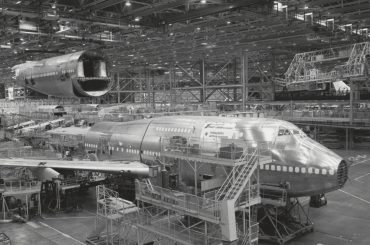
Defence Minister Stephen Smith’s comments at a conference in Canberra this week have reinforced this writer’s perception that Mr Smith either isn’t being properly briefed by his advisers on some of the major defence programs currently underway – specifically the Air 6000 New Air Combat Capability (NACC) project – or that he is ‘target fixated’ on ordering additional Super Hornets for the RAAF.
Smith reiterated a proposed slowdown of the US low rate production (LRIP) rates for the F-35 JSF over the next few years by deferring 179 jets from five LRIP lots to 2017, and that there was “an alignment between the Australian position and the United States’ position”, not for the first time indicating Australia was also looking to defer its first tranche of 12 aircraft beyond the first two F-35As for which we are already committed for delivery in 2014.
“More recently… I’ve been making the point that we now need to look at the first tranche, the timetable for delivering the first tranche, 12 of which are currently scheduled for delivery in 2015-2017,” Smith told media on February 21. “The second tranche of the 14, the remaining 12, the original timetable for those was 2015 to 2017. Just as [US Defense Secretary] Leon Panetta is now looking at the timing of 179 Joint Strike Fighters for a comparable period, so are we.”
Recent statements by Pentagon acquisition head Frank Kendall attribute the LRIP slowdown to concurrency issues with the JSF program – that is, that aircraft produced to date and for the next few LRIP lots will require upgrades in the near future in order to meet planned life of type targets, due to potential structural issues discovered during flight and fatigue testing. US budget estimates show that F-35s built up to LRIP 10 will require upgrades costing between $3 million and $6 million each in order to meet life of type. But, because of the rate drop from a planned 100 per year to less than 40 per year, each aircraft will now cost between $10 million and $15 million more at the lower rate!
Kendall’s statements also overlook the fact that the overall number of these concurrency issues reported on by December’s Quick Look Review (QLR) – fewer than 70 across the three F-35 models – is of an order of magnitude smaller than the low thousands of issues from ‘legacy’ programs such as the F/A-18 and F-16, and that they have been caught far earlier due to modelling and early static testing. Even today – nearly 30 years after they entered service and less than a decade out from retirement – operators have been required to perform costly modifications to their classic F/A-18 fleets in order to get their jets to the promised 6000 hour design life. Witness the ADF’s Project Air 5376 Phase 3.1/3.2 and ongoing structural refurbishment programs.
And on top of this – even though the US budget projects at least $200 million will be required each year out to 2016’s LRIP 10 and beyond to fix concurrency issues – it is likely most if not all of these upgrades will have long been incorporated into production aircraft on the line.
Back to Smith – what he doesn’t appear to realise is that by deferring the decision on the first Phase 2A tranche and thus – by extrapolation – the follow-on second Phase 2B tranche of 58 F-35As, he is putting in jeopardy Australia’s plans to achieve an F-35 initial operating capability (IOC) by late 2017, and thus is widening the capability gap he has stated he will not accept.
Importantly, the money for the program’s new support facilities – initially at Williamtown and subsequently at Tindal and Amberley, including squadron buildings, maintenance hangars, simulators, sustainment and support contracts, and numerous other items vital to support an RAAF F-35A IOC – is budgeted to be drawn from funds allocated to Phase 2B, a decision on which was due to be made late this year. But if this phase is deferred, then so will be the design, planning, contracting, Finance’s Public Works Committee (PWC) vetting process, and construction work for these facilities, the cycle for which is expected to take at least five years.
Further, if current plans to acquire 12 F-35As from LRIP 8 are deferred, then the RAAF is at risk of not just a combat capability gap, but also a prolonged pause in the training of pilots and maintainers – most of which were scheduled to have begun transferring from classic Hornet units from 2015.
The RAAF’s classic Hornets are rapidly approaching their life of type, and Smith has repeatedly said he won’t accept a capability gap from the classic to the JSF. However, by deferring the JSF – which he says he believes will be a successful program – for the sake of saving a potential couple of hundred million dollars in concurrency upgrade costs, he is in effect creating a capability gap which will require a couple of billion dollars of Super Hornets to fill.
Perhaps Smith is looking to leave a legacy in Defence by approving risk-free projects such as additional C-17s, surplus UK amphibious ships, and possibly more Super Hornets, while not wanting to be associated with riskier but likely more capable decisions such as future submarines and the JSF.
Andrew McLaughlin











